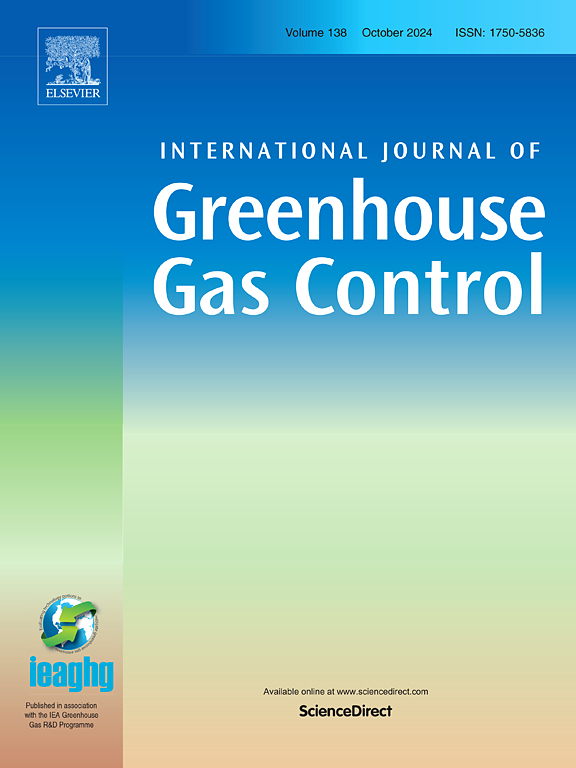Regional screening of saline aquifers in the Malay Basin for CO2 storage
IF 5.2
3区 工程技术
Q2 ENERGY & FUELS
International Journal of Greenhouse Gas Control
Pub Date : 2025-03-11
DOI:10.1016/j.ijggc.2025.104347
引用次数: 0
Abstract
The Malay Basin has received significant attention for geological carbon dioxide storage (GCS), but there are no published studies addressing the selection of appropriate deep saline aquifers. This study closes this gap. We process spatial data and use geological modelling and cluster analysis to identify optimal areas for GCS, considering various subsurface characteristics such as temperature, pressure, porosity and thermophysical CO2 properties. It is found that the basin contains numerous Cenozoic aquifers suitable for GCS including locally thick, but low net-to-gross (NTG), stacked formations. Pliocene aquifers are too shallow to offer storage for CO2 in large quantities, but upper Miocene aquifers located in the northwest of the basin contain promising intervals with significant porosities and conditions favouring denser CO2. Middle Miocene aquifers, while low NTG, are thick, and optimally located around the margins of the basin. They also have significant storage capacity and could be developed as a stacked GCS site. Lower Miocene aquifers are higher NTG, but deeply buried across many areas of the basin, yet the oldest aquifer evaluated still holds substantial storage capacity, where subject to minor burial at the margins of the basin. Overall, this study provides a novel first assessment of aquifer GCS potential in the Malay Basin, while also contributing to wider efforts to evolve screening workflows for other geological basins.
马来盆地含盐含水层的二氧化碳储存区域筛选
马来盆地在地质二氧化碳储存(GCS)方面受到了极大的关注,但没有发表过关于选择合适的深盐水含水层的研究。这项研究弥补了这一差距。考虑到不同的地下特征,如温度、压力、孔隙度和CO2热物理性质,我们对空间数据进行处理,并使用地质建模和聚类分析来确定GCS的最佳区域。发现该盆地含有大量适合GCS的新生代含水层,包括局部较厚但净重比(NTG)较低的叠层。上新世含水层太浅,无法提供大量二氧化碳的储存,但位于盆地西北部的中新世上部含水层含有有潜力的孔隙层,有利于二氧化碳的富集。中中新世含水层相对较厚,且分布在盆地边缘,NTG较低。它们也有很大的存储容量,可以开发成一个堆叠的GCS站点。中新世下部含水层的NTG较高,但深埋在盆地的许多地区,然而评估的最古老的含水层仍然具有大量的储存能力,在盆地边缘有少量的埋藏。总的来说,这项研究为马来盆地的含水层GCS潜力提供了一种新的首次评估,同时也为其他地质盆地的筛选工作流程的发展做出了更广泛的贡献。
本文章由计算机程序翻译,如有差异,请以英文原文为准。
求助全文
约1分钟内获得全文
求助全文
来源期刊
CiteScore
9.20
自引率
10.30%
发文量
199
审稿时长
4.8 months
期刊介绍:
The International Journal of Greenhouse Gas Control is a peer reviewed journal focusing on scientific and engineering developments in greenhouse gas control through capture and storage at large stationary emitters in the power sector and in other major resource, manufacturing and production industries. The Journal covers all greenhouse gas emissions within the power and industrial sectors, and comprises both technical and non-technical related literature in one volume. Original research, review and comments papers are included.

 求助内容:
求助内容: 应助结果提醒方式:
应助结果提醒方式:


